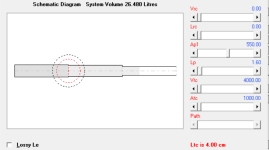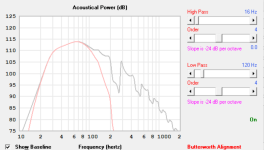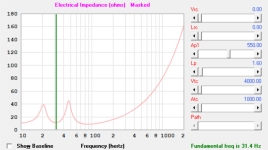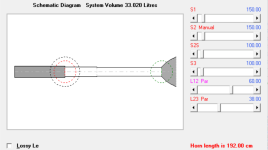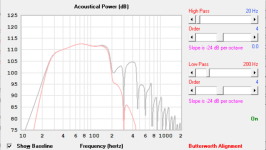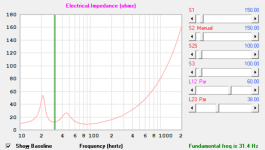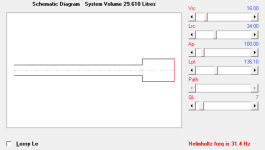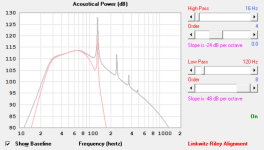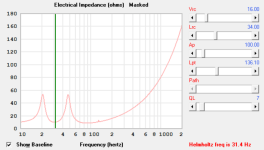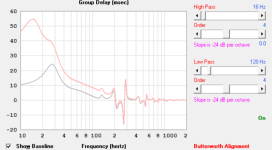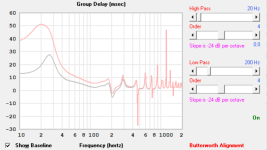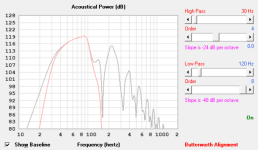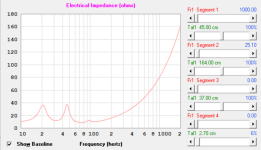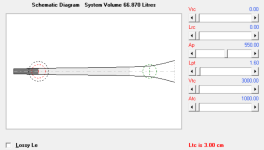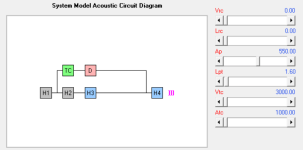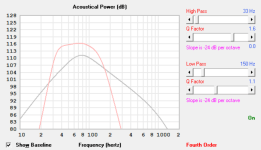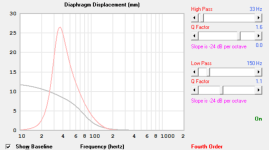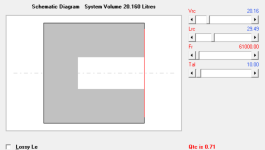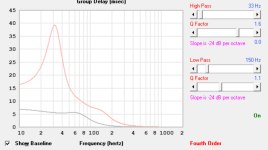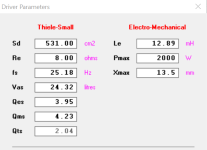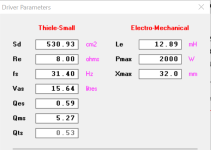Please see this attempt to add that cosmetic exit flare. I have switched to the TH model Driver entry is though the side of that flare and driver is reversedOver damped response that the room, VC heating will move it towards flat in-room and spikes are vent pipe harmonics comb filtering with the driver's output and AFAIK the only way to deal with them is by 'critically' damping the vent.
The back chamber has fill that brings down the spikes, and the exit has some fill that rounds over the remnants of the spikes. Adding the system low and high pass filters gets rd of these products (artefacts)
Something is weird, though. The impedance twin peaks are no longer symmetrical, but the system retains the Fb=Fs 31.4Hz. This maybe due to adjusting segment lengths to compensate for the exit flare and fill for dampening. Not sure what's going on with the impedance even though It's tuned at Fs
That last pic is some 'fourth order' filter thing that I don't understand, but the response looks good to just get louder. I wonder if my DSP unit supports this
